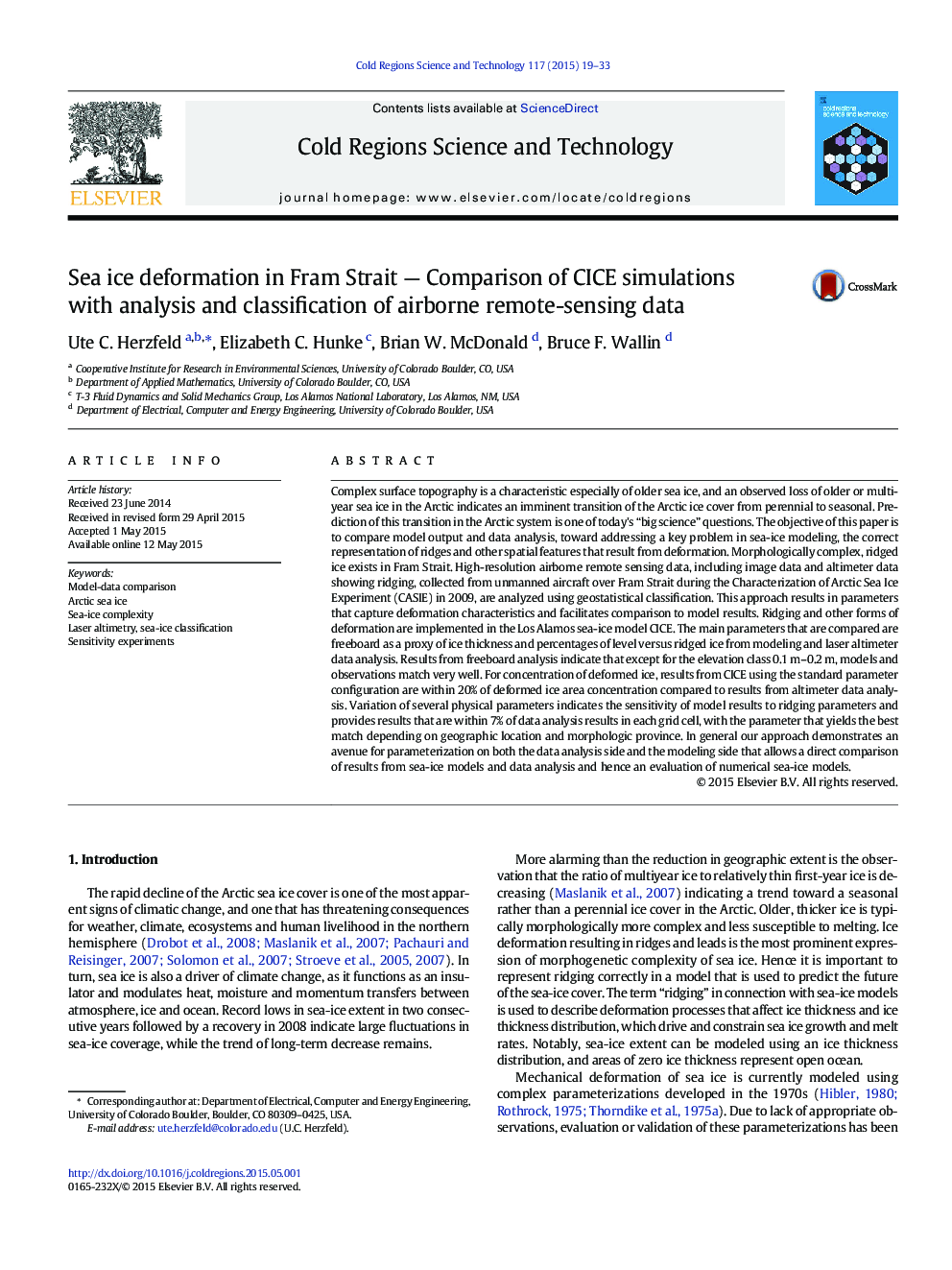| Article ID | Journal | Published Year | Pages | File Type |
|---|---|---|---|---|
| 6426796 | Cold Regions Science and Technology | 2015 | 15 Pages |
â¢We address a key problem in sea-ice modeling, the correct representation of ridges and other deformation features.â¢We derive a novel approach for sea-ice model-data comparison and hence for evaluation of numerical models.â¢We perform a comparison of results from a sea-ice model, CICE, and analysis of remote sensing data.â¢The approach utilizes parameterization on both the data analysis and the modeling side.â¢Results indicate that deformed ice concentration is in the same range for model and data (within 7%) in Fram Strait.
Complex surface topography is a characteristic especially of older sea ice, and an observed loss of older or multi-year sea ice in the Arctic indicates an imminent transition of the Arctic ice cover from perennial to seasonal. Prediction of this transition in the Arctic system is one of today's “big science” questions. The objective of this paper is to compare model output and data analysis, toward addressing a key problem in sea-ice modeling, the correct representation of ridges and other spatial features that result from deformation. Morphologically complex, ridged ice exists in Fram Strait. High-resolution airborne remote sensing data, including image data and altimeter data showing ridging, collected from unmanned aircraft over Fram Strait during the Characterization of Arctic Sea Ice Experiment (CASIE) in 2009, are analyzed using geostatistical classification. This approach results in parameters that capture deformation characteristics and facilitates comparison to model results. Ridging and other forms of deformation are implemented in the Los Alamos sea-ice model CICE. The main parameters that are compared are freeboard as a proxy of ice thickness and percentages of level versus ridged ice from modeling and laser altimeter data analysis. Results from freeboard analysis indicate that except for the elevation class 0.1Â m-0.2Â m, models and observations match very well. For concentration of deformed ice, results from CICE using the standard parameter configuration are within 20% of deformed ice area concentration compared to results from altimeter data analysis. Variation of several physical parameters indicates the sensitivity of model results to ridging parameters and provides results that are within 7% of data analysis results in each grid cell, with the parameter that yields the best match depending on geographic location and morphologic province. In general our approach demonstrates an avenue for parameterization on both the data analysis side and the modeling side that allows a direct comparison of results from sea-ice models and data analysis and hence an evaluation of numerical sea-ice models.
